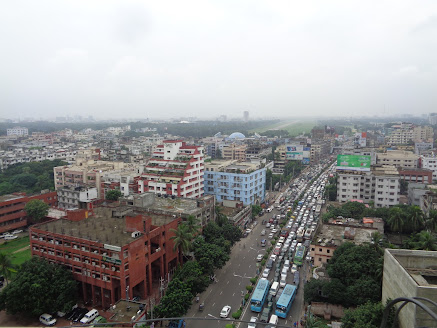The Evolution of Bengali Fashion
The best thing about fashion is that it is constantly evolving and giving both men and women the opportunity to gradually adapt the latest trend into their wardrobes. In the evolution of fashion,culture plays an important role.As Bengali culture is so enriched, so fashion is a significant component of Bengali culture and national pride for many people. Approximately 150 years of Bengali fashion tell us a fascinating tale of reform, resistance, revolution, and, in the end, reorientation.
Before the 1850s-Pre-colonial Era:
In that time, Bengali women were only seen wearing one piece of clothes that was wrapped around their bodies.Also, Bengali men wore dungarees and pants with no upper body garment.
Due to the earlier method of draping the saree without a blouse seemed indecent. So, Bengali women began wearing the sari with a blouse,undershirt(jama) and petticoat(Shaya). This style of sari attire, known as Brahmika Sari.Rabindranath's sister-in-law Jnanadanandini Tagore invented the unique Brahmika drape that can be seen in films like Parineeta and Devdas. She displayed elegance by draping the sari around the body and bringing it over her left shoulder. The Brahmika style evolved into the traditional Bengal sari worn by upper-class Brahmin women.
1890s-The Portuguese Influence:
In the 1890s, Bengali women developed a strong fondness for lace mantillas to pair with sarees. This was a consequence of Bengal and West Bengal being colonized by the Portuguese. It is a headwear that is commonly worn by upper-class women in Spain.
1910s-Adapting with the Royals:
After being inspired by the British royal family, the women began adding lapels to the front of their puffed-sleeved blouses. The borders of the sarees and blouses made of chiffon and muslin were beaded and embroidered.That royal fashion taste fueled the desire more to adapt new types of fashionism in Bengali fashion.
1920s-The roaring 20s:
Daring fashion choices were trendy during the Roaring 20s.In that time, Young ladies from the upper class started adopting sleeveless tops and bob haircuts. They would cover their shoulders with luxurious chanderi silks or wear stunning chiffon sarees with gold or silver zari borders.
1930s-Devdas:
Devdas (1936), one of the early versions of the well-known Bengali romantic novel by Sarat Chandra Chatterjee, set the general design trend at the time. Half-sleeved blouses that lengthen and define the upper body became popular during that time. Even men were tempted to try out the male protagonist's look by wearing a shirt kameez with airy dhotis or lungis.
1950s-A timeless beauty:
Nargis was already widely regarded as a fashion icon by the time the 1950s arrived. Many women began adopting her high-neck blouse style because she is from Kolkata. As a tribute to her ageless sensuality, women at that time began matching chiffon sarees with blouses with high-necks.
1960s- Modernism in fashion:
The 1960s were a decade of innovation and exploration. Innovation in fashion was made possible by modernism. Back then, It was all the rage to wear sleeveless tops and fitted chiffon sarees with golden trim. Kurtas and salwars that were tailored to the body provided comfort while also emphasizing the feminine figure.
1970s-Liberation in style:
In 1971, a new sun rose in Bangladesh with the success in the liberation war. After the liberation, Bengali fashion eventually began to reflect the joy of independence and self-actualization.Platform shoes, tight-fitting salwar kameez, and the iconic bell-bottom pants defined the feminist themes of the era. Women were attracted to the unique fashion sense of Bengali icons like Runa Laila, Kabori Sarwar, and Bobita.
1990s-Mughal influence:
Surprisingly, Mughal fashion experienced a modern comeback in the 1990s. Salwar kameez in the anarkali style became trendy in that era. Along with the classic Mughal fashion, fashion got modernized and men and women both preferred to style with oversized denim pants and turtleneck sweaters.
2000s-The turn of the Millennium:
In that era, we see a rise in denim, western-inspired shirts and tops at the turn of the millennium. Bengali culture was clearly dualized via fusion clothing.College students began wearing long kurtas with jeans. Saris generally migrated into occasional wear as culture became more globalized and fast-paced.
2010s-Present:Turn of the century:
After adopting the 90s’ and 20s’ iconic fashion, since 2010, Bengali women have tended to prefer fusion fashion instead of sticking to a specific genre as their preferred look.Multiple saree styles are quite significant among the most experimented looks.. There are various blouse designs, and there are several saree draping options. For both casual and party attire, people began merging the east and west.
The constant discussion and concern about clothing, however, are not just a modern thing. It has been happening for ages. Very likely, it began when people began to wear clothing.Now, talking about the evolution of bengali fashion, in a word it is mesmerizing.At the present, Bengali attire crosses the line between tradition and modernity because the community has adopted new fashions and absorbed other cultures in terms of fashion also.Thus, Bengali fashion has evolved in a beautiful way over the years.
you can learn more about the rise of Bengali fashion here.








Comments
Post a Comment